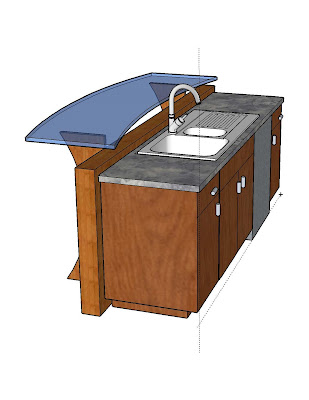
Dwell's kitchen blog is running a review of the new Jura Capresso ENA espresso makers and that's all well and good. Jura Capresso makes countertop, automatic espresso machines if you've never heard of them. There was a time in my life when I would have lopped off an arm gladly in exchange for a Capresso of my very own. If you've never seen one, just go into a Williams-Sonoma or a Sur la Table and ask to see the most expensive coffeemaker they have. The Jura Capresso automatic machines retail for anywhere from $2300 to $3400 dollars. That's a lot of dough for a cuppa joe. It's a lot of money and the machines are anything but compact --they eat up a lot of space on a counter top.

The new ENA line is meant to be a remedy for the size and price barriers their regular lines present for a lot of people. So the ENA line is only 9-1/2" wide, and its prices range from $899 to $1199. That's still a lot of money for something that will hog up my counters.
An alternative I used to see in a much better light is the built-in espresso systems made by companies like Miele and Gaggenau. It would be easy to think that as built-in machines, they would cost more than the Capresso countertop models. Well they don't surprisingly enough. They average around $2500 for the machine itself and then you have to figure in the added expense of building the thing into a wall or a line of cabinetry.
Either of those options is a huge amount of money. Now, I specify the Miele built-in systems all the time and I would love to see a study of the habits of people who buy them. I have a feeling that those machines don't get used very often, certainly not often enough to justify their expense. I'll admit that my theory might come from my being cheap, but I'm not so sure.
Now I love espresso with a passion that frightens me sometimes. Just give it to me plain, no contaminants. I drink it in the morning in lieu of brewed coffee, and I can no sooner envision a life without espresso than I can a life without sunshine or oxygen. So what do I do? I love espresso, but I like the idea of not spending three grand on a coffeemaker just as much.

The answer comes in humble form of the Bialetti stovetop espresso pot. The Bialetti Moka was invented in 1933 by Italian industrial designer Alfonso Bialetti. The design of the thing is iconic to say the least. It still made the same way, works the same way and looks the same way that it did in 1933. I paid $25 for my Bialetti and I use it every day. And with that I throw down the gauntlet and challenge any of these countertop or built-in machines to a duel. My $25 machine makes the best espresso on the planet. Don't believe me? Bring your $3000 coffee maker over to my place and we'll have a brew off.












